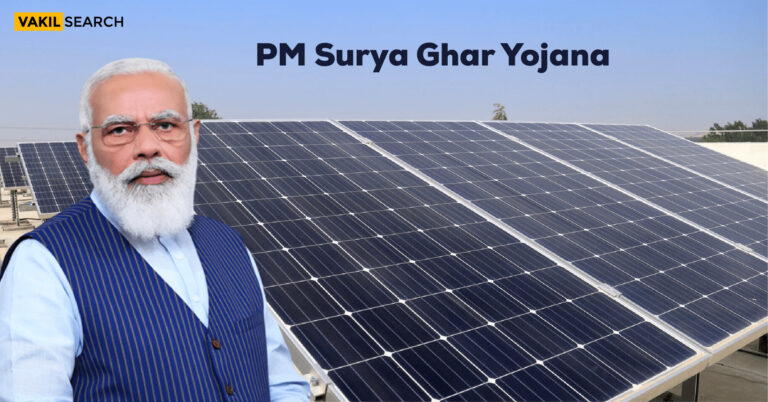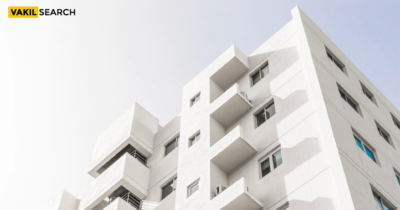The National Health Protection Scheme, also known as Ayushman Bharat or Pradhan Mantri Jan Arogya Yojana (PMJAY), is a health insurance program launched by the Government of India in 2018.
Overview
It is a fundamental right to access quality healthcare, but unfortunately, not all citizens can afford it. In 2018, the Indian government launched the National Health Protection Scheme (NHPS), also known as Ayushman Bharat, to provide financial protection to the poor and vulnerable. More than 100 million families or 500 million individuals will be provided with affordable healthcare through this scheme, which is one of the largest government-funded healthcare programs in the world.
What is the National Health Protection Scheme?
In 2018, the NHPS PMJAY scheme was launched and is now referred to as the Ayushman Bharat Yojana. The scheme provides Indian citizens with five lakhs of insurance cover, as well as medical services to over 50 crore Indians. The NHPS PMJAY scheme covers over 1,393 medical procedures and has a wide network of public and private empanelled hospitals, as well as a variety of sponsored programs. It is intended to benefit over ten crores of rural, economically weak families. Moreover, it also targets urban residents from low socio-economic backgrounds.
Ayushman Bharat National Health Protection Programme, also known as Pradhan Mantri Jan Arogya Yojana (PMJAY), focuses on maternal and child health services. Under the Ayushman Bharat National Health Protection Programme, Indian citizens are offered health coverage for a sum of ₹5 lakh. The program also provides affordable health services to over 50 crore Indian citizens. Take a look below to understand the diversified objectives of the Ayushman Bharat NHPS.
Implementation Strategy
- An Ayushman Bharat National Health Protection Mission Agency (AB-NHPMA) will be established to manage the scheme at the national level. State/UTs will be assisted in implementing the scheme by a dedicated entity known as the State Health Agency (SHA). The scheme can be implemented by an existing Trust/ Society/ Non-Profit Organisation/ State Nodal Agency (SNA) or a new entity.
- Depending on the state or territory, the scheme can be implemented through an insurance company, a trust/society, or an integrated approach.
Major impact
The National Health Protection Mission – Ayushman Bharat will have a significant impact on the reduction of Out of Pocket (OOP) expenditures as a result of:
- Benefit coverage increased to nearly 40% of the population (the poorest and most vulnerable).
- Almost all secondary and tertiary hospitalisations are covered (except for a negative list).
- There is a coverage limit of five lakhs per family (no restrictions on the size of the family)
Consequently, the population will have greater access to quality health and medication. Additionally, the unmet needs of the population hidden due to a lack of financial resources will be met. As a result, timely treatment, improved health outcomes, patient satisfaction, improved productivity and efficiency, job creation, and improved quality of life will result. Expenditures involved
| According to Ministry of Finance guidelines, premium payments will be split between Central and State Governments in a specific ratio. The total expenditure will depend on actual market-determined premiums paid in States/UTs where Ayushman Bharat – National Health Protection Mission will be implemented through insurance companies. When the scheme is implemented in Trust/ Society mode, the central share will be based on actual expenditure or premium ceiling (whichever is lower) in the predetermined ratio. |
Objectives of the National Health Protection Scheme
- The National Health Protection Scheme (NHPS) in India aims to provide quality secondary and tertiary care to the poorest population
- The NHPS also seeks to create 150,000 health and wellness centres to offer comprehensive primary health care, including maternal and child health and non-communicable diseases
- Essential drugs and diagnostic services will be provided for free under NHPS.
- The objective of NHPS is to offer financial protection against catastrophic health expenses and improve access to quality health care
- The Pradhan Manti Jan Arogya Yojana is part of the NHPS and provides quality secondary and tertiary health care to the poorest
- The NHPS aims to provide beneficiaries with financial protection against catastrophic health expenditures and to improve access to quality health care.
Number of beneficiaries
According to the latest Socio-Economic Caste Census (SECC) data covering both rural and urban areas, the Ayushman Bharat National Health Protection Mission will target approximately 10.74 crores of poor, deprived rural as identified occupational categories of urban workers’ families. In addition to being dynamic and aspirational, the scheme will consider any changes in future exclusion, inclusion, deprivation, and occupational criteria as determined by the SECC.
States/Districts covered
All States/UTs will be covered under Ayushman Bharat – National Health Protection Mission.
Programme Components
The NHPS components provide coverage for hospitalisation expenses and transportation charges. It assesses poverty through multidimensional poverty measures (MPM) targeting households.
Start Date
The programme started in 2018.
Previous Programme Name
The Rashtriya Swasthya Bima Yojana (RSBY) was renamed Rashtriya Swasthya Suraksha Yojana (RSSY) under the Ministry of Health and Family Welfare. In 2017-18 budget, it was renamed as the National Health Protection Scheme. SCHISC, a top-up over RSBY, was also included, providing enhanced coverage of INR 30,000 per eligible senior citizen (aged 60 y.o. or older) per family. The RSBY targeted BPL persons and 11 other defined categories.
Coverage
RSBY covered 130 million beneficiaries in more than 4.1 crore (41 million) households in 2017. NHPS aims to expand to reach 10 crore (100,000,000) families, more than doubling the coverage. As the programme is still being rolled out, no exact figures of beneficiaries under the NHPS are currently available.
Programme Expenditure
| Programme Expenditure | INR (crore) |
| 2017-18 Budget estimate | 1,000 |
| 2017-18 Expenditure | 505 |
| 2018-19 Budget estimate | 2,000 |
| 2018-19 Budget revised estimates | 2,700 |
Why Should You Opt for the NHPS Scheme?
- In India, out-of-pocket medical expenses account for 62.6% of total healthcare expenditures, which is the highest in the world
- Public health expenditures in India were 1.28% of GDP in fiscal year 2018, which is quite low in comparison to many other countries
- In India, the National Health Protection Scheme provides extensive healthcare coverage to more than 10.74 crore vulnerable and poor families who comprise the bottom 40% of the population
- As a result of the government’s health insurance plan, nearly six crore Indians are forced into poverty each year due to high healthcare costs.
Advantages of the National Health Protection Scheme
- In India, the National Health Protection Scheme provides beneficiaries with an annual insurance coverage of five lakh rupees
- Cashless benefits may be obtained from public hospitals or private hospitals that have been empanelled
- Cashless benefits offered by the scheme include investigation costs, pre- and post-hospitalization expenses, and pre-existing diseases
Who Benefits Under NHPS?
- Over 10 crore poor and deprived rural families are expected to benefit from the NHPS scheme
- Specifically, it targets the recognized occupational categories of urban worker’s families, such as sweepers, peons, delivery personnel, etc.
- Every member of the family is covered, regardless of their age or size
- The NHPS policy covers all eligible families listed in the SECC database
How Will NHPS be Implemented?
- As part of the NHPS scheme, states are free to choose the manner in which they wish to implement the plan.
- It is possible to establish and coordinate the Ayushman Bharat National Health Protection Mission at a national level easily through the Ayushman Bharat Agency.
- The State Health Agency is established at the state or union territory level. The State Health Agency is a new entity to achieve the primary goal of the program.
- The central government bears 60% of the cost of health insurance premiums, while the state governments contribute the remaining 40%.
- AB-NHPS moves the generated funds to the SHAs through secured accounts.
National Health Protection Scheme (NHPS) Vs Rashtriya Swasthya Bima Yojana (RSBY)
| National Health Protection Scheme (NHPS) | Rashtriya Swasthya Bima Yojana (RSBY) |
| Depends on the entitlement | Depends on the enrolment |
| No cap on the family size or age | Covers only five members of the family |
| Offers a coverage of ₹5 Lakhs | Provides coverage of ₹30,000 |
| Has the budgetary support of the State and the Central government | BPL families cannot afford RSBY since it does not cover outpatient care |
Financing of the Scheme
The Government of India establishes a national ceiling amount to determine the maximum limit for the central share of the contribution. PM-JAY is completely funded by the Government of India, with costs shared between the Central and State Governments. It is expected that the actual premium discovered through the open tendering process or the maximum ceiling of the estimated premium determined by the Government of India for the implementation of PM-JAY, whichever is less, will be shared by the Central Government and States/UTs in accordance with the present directives issued by the Ministry of Finance. A portion of the administrative costs for implementing the scheme at the State level is also covered under the scheme and is shared between the Centre and the State in the same manner.
In the existing sharing pattern, for States (other than North-Eastern States & three Himalayan States) and Union Territories with the legislature, the ratio is 60:40. For North-Eastern States and three Himalayan States (viz. Jammu and Kashmir, Himachal Pradesh and Uttarakhand), the ratio is 90:10. In Union Territories without legislatures, the Central Government is able to provide up to 100%. For more, get basic legal advice from Vakilsearch.
Payment of Central Share
- A flat premium per family is paid to the state government, which pays the insurer based on the number of eligible families in the family.
- If the State is using an Implementation Support Agency, then the cost of the ISA, which is determined through a tender, is also shared between the Centre and State.
Expansion of Coverage By States Under PM-JAY, Convergence and Flexibility to The States
Many States have implemented their own health insurance/assurance schemes over the past few decades that cover only tertiary care conditions. These schemes are mostly available within the State boundaries, with the exception of some smaller States that have empanelled hospitals outside the State boundaries to provide benefit coverage. Very few states had converged their schemes with the erstwhile RSBY scheme, and many were operating independently. This was due to the need for more flexibility in the design of the RSBY, which, although initially helpful, became a challenge over time and gave States limited flexibility.
There were large variations across States in terms of eligibility criteria and databases. Few states were using the food subsidy database, while others had created a separate database for their welfare programs.
Among the primary objectives of PM-JAY were to provide comprehensive coverage for catastrophic illnesses, reduce catastrophic out-of-pocket expenditures, improve accessibility to hospitalisation care, reduce unmet needs, and converge various health insurance schemes across states. PM-JAY will also establish national standards for a health assurance system and provide national portability of care as part of its initiative.
Because PM-JAY is designed in accordance with cooperative federalism, a great deal of flexibility has been built into the PM-JAY design. This allows States to customise their schemes and implement them as they see fit.
States Have Been Provided with the Flexibility in Terms of the Following Parameters
- Depending on the State’s choice of implementation model, the scheme may be implemented through a trust, an insurance company, or a hybrid model.
- Use of beneficiary data – PM-JAY uses SECC data for targeting beneficiaries. However, States are given the flexibility to choose the dataset for this purpose if they are covering more beneficiaries than SECC has defined. In addition, the State must ensure that all beneficiaries who are eligible based on SECC data are covered.
- As per the co-branding guidelines of the scheme, states may co-brand their existing health insurance/assurance schemes with PM-JAY.
- Coverage of more people – States may cover a greater number of families than those defined by SECC data. These additional families will be responsible for the full costs of the program.
- It is possible for the State to extend the benefit coverage beyond five lakhs per family per year if they so desire. In this case, however, the State will be responsible for the full cost of the additional coverage.
- A revision has been made to PM-JAY package numbers and prices – PM-JAY covers more than 1300 packages, and NHA has fixed the prices for them. The States have been given the flexibility to expand the number of packages and to revise the package prices within a limit, taking into account the different disease profiles and costs of services in different States.
- The National Health Association has defined a set of conditions that are reserved for only public healthcare facilities in order to ensure that private providers do not misuse such services that can be provided by government health facilities. The State can revise the list of such conditions reserved for public hospitals.
- Prior to the launch of PM-JAY, a number of States had implemented their own health insurance schemes and used their own computer systems. In PM-JAY, States can continue to use their own IT systems and share data with NHA in a specified format in real-time.
- States are also provided with the flexibility to deduct a certain percentage of payments made to public hospitals from the amount of the claims.
Also, Read:










